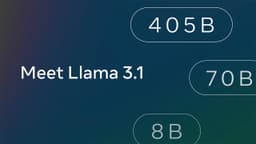How to Find the Maximum Number of Vowels in a Substring of Given Length?
In many developer interviews, you might encounter problems involving strings and substrings. One common type of problem involves counting the vowels in substrings of a given length. Interviews typically aim to assess problem-solving skills and coding efficiency. This article explores this problem, provides example interview questions, and gives a clear approach to solving it.
Understanding the Problem
The challenge is to determine the maximum number of vowels that can be found in any substring of a specified length from a given string. A vowel in the English language is defined as one of the letters 'a', 'e', 'i', 'o', or 'u' (both lowercase and uppercase).
Consider a string s and a number k, which represents the desired length of the substring. Your task is to locate the substring of length k that contains the highest count of vowels.
Example Problem Statement
Imagine you have the string "abecidofug" and your goal is to assess all possible substrings of length 5. How many vowels are in the substring that has the maximum count?
Example Questions for Interviews
-
Question 1: Write a function that takes a string and an integer k as arguments and returns the maximum number of vowels in any substring of length k.
Sample Input:
("abecidofug", 5)Expected Output:
4 -
Question 2: What will be the output for the string
"hello world"with k equals3?Sample Input:
("hello world", 3)Expected Output:
2
Approach to Solve the Problem
A common and efficient way to solve this problem is by using the sliding window technique. This enables you to traverse the string only once, making the solution run in linear time.
Here is how the sliding window technique works in this case:
-
Initialize Variables: Create a counter to track the number of vowels found in the current substring and a variable to store the maximum count found.
-
Expand and Adjust the Window: Start by expanding the window to the right until its length equals
k. Count the vowels in this initial window. -
Slide the Window: Move the window one character at a time to the right:
- Remove the character that is exiting the window.
- Add the character that is entering the window.
- Update the vowel count accordingly.
- Compare and update the maximum count as needed.
-
Return the Maximum Count: After traversing the string, the maximum count variable will hold the answer.
Example Code Implementation
Here’s an example of how you might implement this in Python:
Python
Additional Interview Tips
When solving this problem in an interview:
- Talk through your thought process clearly while coding.
- Be prepared to explain the time complexity of your solution, which is O(n) for the sliding window approach.
- Consider edge cases, such as an empty string or k being larger than the length of the string.
- Optimize your checking for vowels with a set for efficiency.
These strategies will help you demonstrate your problem-solving abilities and coding skills in an interview setting.












